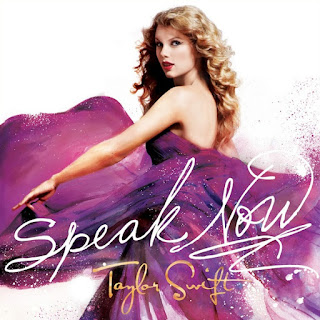Visual Techniques:
-Movement
-Contrast
-Depth
-Dimension
-Symbolism
-Representational
-Color
-Tone
Visual Techniques:
-Contrast
-Depth
-Dimension
-Representational
-Tone
-Color
Compare and Contrast:
While Adele's and Taylor Swift's album covers use contrast in different ways, it is used in a way that compliments and is successful towards each album. Adele's 19 uses contrast to the extreme. There are very minimal colors, and in fact, the majority of the image is black. Taylor Swift's Speak Now uses contrast in a different way. The purple dress against the white letters creates a subtle contrast that works in all the right ways, making it so that the words "speak now" are easily read. Definition is given to both the words and the colors of the image. Both album covers also utilize depth and dimension. The shading on 19 illuminates the artist's face, making it real by adding depth, rather than having the picture be a flat image. The highlight on Adele's bangs also add dimension to the picture. Speak Now also utilizes depth and dimension through the motion of Swift's dress and the placement of the words on the image. The motion of the dress adds dimension because of the shading and depth given to the contours of the dress itself. Both albums are also very representational. They portray what the album stands for, and what it means to the artist as well as potential viewers. Swift's album has a sense of spontaneity, whereas Adele's album has a sense of sorrow and cautiousness. Both album covers also use tone and color. Adele's 19 does not use a lot of color and tone, but just enough to convey the message intended. Swift's Speak Now uses bold purple coloring of Swift's dress, as well as the bright red lipstick Swift is wearing. One can also spot the cat-eye eyeliner effect worn by Swift. The amount of color in Swift's album artwork adds to the element of spontaneity in the message conveyed. Both albums are very inspirational and personal to the artist, which allow the artist to therefore be personal with his or her audience. As a singer/songwriter who wants to design her own album artwork, these artists are very inspirational to me. They prove not only through their music, but also through their album artwork that being personal can lead to good things, and that you have to put yourself out there in order to get anywhere.


















